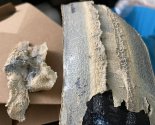Just made my first post in the S40 forum, but wanted to re-visit this discussion as I believe my experience may benefit a few of those struggling with tubeless. A few points for your consideration. Tubeless gurus should just ignore, as this will be very old news to you.
For sealant the vast majority of dedicated and experience tubeless users will insist on Orange Seal Regular (not endurance). Others can be as good but none are greeted with such universal approval.
Tire pressure for some on this forum seems very high. I won't recommend any particular pressure, but give some consideration to your total system weight and investigate if lower pressure is possible. Look up the Silca Tire Pressure Calculator. The main benefits of lower pressure are improved traction and comfort. I appreciate that on a recumbent we can't hop over obstacles. The solution should not be to pump to 100 psi, rather a higher volume tire at low psi will address all issues - pinch flat protection, traction, and comfort. Remember, many Paris Roubaix competitors will race on 28 - 30mm tubeless tires at 65 - 75 psi. Many will finish without punctures. True, Paris Roubaix is done on conventional road bikes, but it still Paris Roubaix - slamming into nasty cobbles at 70 kmh in the Arenberg Forest is surely the match of anything we may throw at our recumbents. Inner tubes simply cannot survive this sort of punishment. Tubulars, well that is something different altogether.
In general, I am surprised more are not running bigger tires. For road applications it is worth considering wider rims - up 32mm external and 25mm internal. A nominal 28mm tire mounted on the front will balloon out to about 31.5mm creating an aerodynamically optimal tire
/rim interface. A nominal 30mm tire will be about 33mm. Not optimal but OK for the rear where the air is already disturbed. I run this combination on my DF Factor Ostro at about 65psi. While all things being equal, a narrower setup would be more aero, the benefits of the increased tire volume and lower pressure are well worth the tiny loss in aero IMO.
And finally, this thread contains some unfortunate stories of attempts at patching tires, and fitting innertubes into messy tubeless tires on the road. Perhaps I missed it, but I don't believe anyone mentioned Dynaplugs. If you are running tubeless you should always have Dynaplugs with you.




